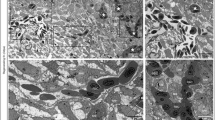Abstract
It has become increasingly clear that definitive tests for angiogenesis require in vivo assays. Recently, the Matrigel plug assay has become the method of choice for many studies involving in vivo testing for angiogenesis. In this assay, test angiogenesis-inducing compounds such as bFGF or tumor cells are introduced into cold liquid Matrigel which, after subcutaneous injection, solidifies and permits penetration by host cells and the formation of new blood vessels. Assessment of angiogenesis in the Matrigel plug is achieved either by measuring hemoglobin or by scoring selected regions of histological sections for vascular density. We now describe a modification of the Matrigel plug assay which permits a more precise visualization of the angiogenic reaction, provides directional information, requires no histological analysis, and lends itself to photographic documentation and image analysis protocols. We illustrate the assay by describing dose- and time-dependent responses to tumors of murine and human origin, to angiogenesis-inducing factors such as bFGF (FGF-2) and VEGF and to anti-angiogenic agents such as endostatin. The method has been used as well to demonstrate blood vessel recruitment by embryonic chick aortic arch rudiments. Additionally it has been able to detect strain-dependent differences in susceptibility to angiogenic stimulation.
Similar content being viewed by others
References
Auerbach R, Auerbach W, Polakowski I. Assays for angiogenesis. Pharmacol Ther 1991; 51: 1–11.
Auerbach W, Auerbach R. Angiogenesis inhibition: A review. Pharmacol Therap 1994; 63: 265–311.
Auerbach W, Auerbach R. In vivo assays for angiogenesis. In Maragoudakis ME et al. (eds): Angiogenesis: Molecular Biology, Clinical Aspects, New York: Plenum Press 1984;283–7.
Auerbach R, Akhtar N, Lewis RL, Shinners BL. Angiogenesis assays: Problems and pitfalls. Cancer Metastasis Rev 2000; 19: 167–72.
Fan TP-D, Polverini PJ. In vivo models of angiogenesis. In Bicknell R, Ferrara N (eds): Tumor Angiogenesis. Oxford: Oxford University Press 1997;5–18.
Jain RK, Schlenger K, Hoeckel M, Yuan F. Quantitative angiogenesis assays: Progress and problems. Nat Med 1997; 3: 1203–8.
Gimbrone MA Jr, Leapman SB, Cotran RS, Folkman J. Tumor dormancy in vivo by prevention of neovascularization. J Exp Med 1974; 136: 261–76.
Muthukkaruppan VR, Auerbach R. Angiogenesis in the mouse cornea. Science 1979; 205: 1416–8.
Passaniti A, Taylor RM, Pili R et al. A simple, quantitative method for assessing angiogenesis and antiangiogenic agents using reconstituted basement membrane, heparin and fibroblast growth factor. Lab Invest 1992; 67: 519–28.
Grant DS, Kinsella JL, Fridman R et al. Interaction of endothelial cells with a laminin A chain peptide (SIKVAV) in vitro and induction of angiogenic behavior in vivo. J Cell Physiol 1992; 153: 614–25.
Thamm DH, Dickerson EB, Akhtar N et al. Biological and molecular characterization of a canine hemangiosarcoma cell line. Proceedings of the ACVIM 20th Annu Vet Med Forum, May 25–28, 2000. J Vet Intern Med 2000; 14: 123.
Thamm DH, Dickerson EB, Helfand SC, MacEwen EG. Expression of angiogenic growth factors and receptors in canine angiosarcoma. Proc Am Assoc Cancer Res (Abstr #3983). New Orleans, Louisiana, March 24–28, 2001.
Stewart RJ, Panigrahy D, Flynn E, Folkman J. Vascular endothelial growth factor expression and tumor angiogenesis are regulated by androgens in hormone responsive human prostate carcinoma: Evidence for androgen dependent destabilization of vascular endothelial growth factor transcripts. J Urol 2001; 165: 688–93.
Obeso J, Weber J, Auerbach R. A hemangioendothelioma-derived cell line: Its use as a model for the study of endothelial cell biology. Lab Invest 1990; 63: 259–69.
Lin P, Buxton JA, Acheson A et al. Antiangiogenic gene therapy targeting the endothelium-specific receptor tyrosine kinase Tie-2. Proc Natl Acad Sci USA 1998; 95: 8829–34.
Rakhmilevich AL, Janssen K, Hao Z et al. Interleukin-12 gene therapy of a weakly immunogenic mouse mammary carcinoma results in reduction of spontaneous lung metastases via a T-cell independent mechanism. Cancer Gene Ther 2000; 7: 826–38.
Wang SJ, Greer P, Auerbach R. Isolation and propagation of yolk sac-derived endothelial cells from a hypervascular transgenic mouse expressing a gain-of-function fps/fes protooncogene. In Vitro Cell Dev Biol 1996; 32: 292–9.
Muthukkaruppan VR, Shinners BL, Lewis RL et al. The chick embryo aortic arch assay: A new, rapid, quantifiable in vitro method for testing the efficacy of angiogenic and anti-angiogenic factors in a three-dimensional, serum-free organ culture system. Proc AACR Annual Meeting, April, 2000.
Rohan RM, Fernandez A, Udagawa T, Yuan J, D'Amato RJ. Genetic heterogeneity of angiogenesis in mice. FASEB J 2000; 14: 871–6.
Kenyon BM, Voest EE, Chen C et al. A model of angiogenesis in the mouse cornea. Invest Ophthalmol Vis Sci 1996; 37: 1625–32.
Cao Z, Baguley BC, Ching L-M. Interferon-inducible protein 10 induction and inhibition of angiogenesis in vivo by the antitumor agent 5,6–dimethylxanthrenon-4 acetic acid (DMXAA). Cancer Res 2001; 61: 1517–21.
Sweeney CJ, Miller KD, Sissons SE et al. The antiangiogenic property of docetaxel is synergistic with a recombinant humanized monoclonal antibody against vascular endothelial growth factor or 2–methoxyestradiol but antagonized by endothelial growth factors. Cancer Res 2001; 61: 3369–72.
Baish JW, Jain RK. Fractals and Cancer. Cancer Res 2000; 60: 3683–8.
Dellian M, Witwer BP, Salehi HA et al. Quantitation and physiological characterization of angiogenic vessels in mice. Effect of basic fibroblast growth factor, vascular endothelial growth factor/vascular permeability factor and host microenvironment. Am J Pathol 1996; 149: 59–71.
Parsons-Wingerter P, Lwai B, Yang MC et al. A novel assay of angiogenesis in the quail chorioallantoic membrane: stimulation by bFGF and inhibition by angiostatin according to fractal dimension and grid intersection. Microvasc Res 1998; 55: 201–14.
Sidky YA, Auerbach R. Lymphocyte-induced angiogenesis: A quantitative and sensitive assay of the graft-vs.-host reaction. J Exp Med 1975; 141: 1084–1100.
Kumar CC, Malkowski M, Yin Z et al. Inhibition of angiogenesis and tumor growth by SCH221153, a dual alpha(v)beta3 and alpha(v)beta5 integrin receptor antagonist. Cancer Res 2001; 61: 2232–8.
Author information
Authors and Affiliations
Corresponding author
Rights and permissions
About this article
Cite this article
Akhtar, N., Dickerson, E.B. & Auerbach, R. The sponge/Matrigel angiogenesis assay. Angiogenesis 5, 75–80 (2002). https://doi.org/10.1023/A:1021507031486
Issue Date:
DOI: https://doi.org/10.1023/A:1021507031486




